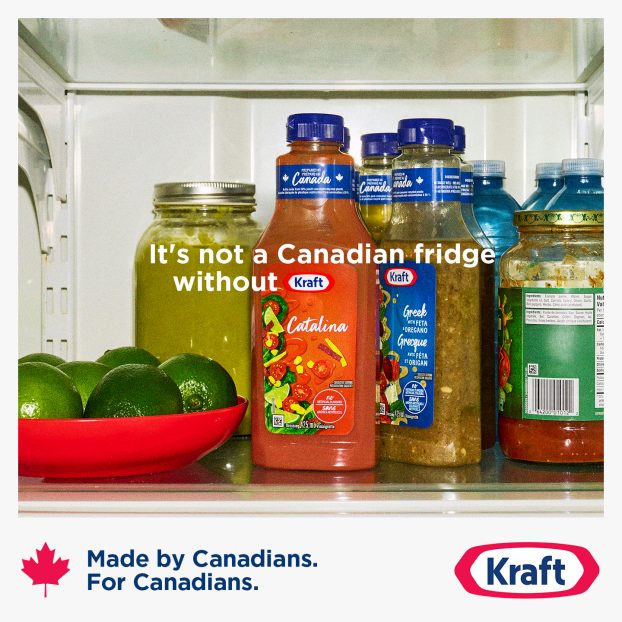At this year’s Retail Council of Canada dinner in Toronto, Andrea Reisman, e-commerce pioneer and CEO of Petopia.com, confirmed the role of the Internet in today’s retail marketing mix, saying: ‘We [now] realize the Web is a channel – it’s neither a threat nor a saviour to traditional retail.’
Wow. What a bummer. Particularly if you were an investor in e-tailing stocks that have tanked in the past year while bricks-and-mortar retailers stubbornly held 98% of their revenue base.
Like Austin Powers’ search for his lost mojo, the retail industry is searching for the ‘wow factor’ that can deliver on the Internet’s seductive possibilities.
How’s this for wow factor? According to Digitrends.net, retailer JCPenney says its Web-only customers spend $121 per year, those buying in stores spend $194 annually, while catalogue customers spend $292 yearly. However, customers who shop all three ways spend $1,050.
Web part of the merchandising mix
As Reisman and many other participants in the electronic retailing industry are concluding, the Internet’s wow factor comes to the fore when it is considered part of, not apart from, a rich merchandising mix. And as JCPenney proves, success is attainable. But such successes are built on strong return on investment (ROI) principles that involve the guts – the undeniable bricks-and-mortar reality – of retailing.
The Internet’s job is to add some additional marketing muscle to the retailing picture. In the ‘clicks-and-bricks’ community, we refer to this as multi-channel retailing. But before we allow another hot business buzzword to knock traditional retailers off their main game, we need to set the record straight on a few myths that still linger, and explain ROI benefits clearly – devoid of the Internet’s customary ‘if-you-ask-too-many-questions-you-don’t-get-it’ hype.
Setting the record straight
First the myths: Let’s lay to rest the notion that mainstream consumer goods can be profitably sold solely over the Net. Venture capitalists have fled the scene of the dot-com investment crimes they helped commit, while analysts have pronounced that 90% of today’s ‘pure plays’ – companies that do business solely on the Net – will die on the operating table as they try to stem their bleeding. With some notable exceptions, such as tourism and financial services, digital retailing isn’t going to overturn traditional retailing anytime soon.
A second powerful myth is that traditional retail executives can somehow defy the laws of e-commerce gravity and create their own pure-play offerings. It must have been difficult the last few years for veteran retail executives to watch twentysomething e-commerce rivals overpopulate BMW showrooms with their instant millions. So, some of the vets went into their boardrooms and retained blue-chip management consultants to affirm their hope that creating a freestanding dot-com would result in the same sort of ridiculous valuations for their own businesses. The only consolation here is that the twentysomething dot-com washouts have been returning their nearly-new luxury cars at a rapid rate, leaving ‘real’ retail executives in a position to take advantage of a bargain when they see it.
Embrace your bricks-and-mortar side
Myths aside, here are some clear Internet business examples that embrace, rather than ignore, the infrastructure created by successful retail merchandisers:
The Internet has ROI written all over it when applied to the creation of marketing materials that drive bricks-and-mortar operations – which explains why pure-play e-tailers like Lucy.com and Garden.com are embracing the century-old tactic of catalogue marketing.
Yet, both pure-play and traditional retailers tend to pay twice to create catalogue content – once for the wages, Macintosh computers, and desktop publishing software used to create paper-based flyers and catalogues. And once again for the wages, PCs, and e-commerce development software used to create Web sites.
New Internet-based systems allow multi-channel retailers to pay once, by loading the desktop publishing text and images into a database system that can simultaneously pump out print and Web marketing pieces. The ROI is inescapable.
Another example: In a reverse-takeover of e-tailing wisdom, in-store Internet-based kiosks can extend the reach and efficiency of the bricks-and-mortar storefront. Consumers visit physical stores, and use the Web kiosks to order out-of-stock or otherwise impractical-to-carry ‘virtual’ inventory. These kiosks can also be used to deliver customer service training and product launch information to store associates. Here, the Internet is being used to make efficient use of the core business, versus attempting to replace it.
Yet one more multi-channel example involves extending the nerve endings of the bricks-and-mortar store by creating online customer relationships. For the many consumers who enjoy browsing (versus purchasing) online, the bricks-and-mortar retailer can offer a customized electronic flyer that ties offers to the customer’s specific interests and shopping patterns, while inviting the consumer into the store to act on the information. Done right, this high-touch approach yields the kind of results JCPenney is experiencing, where online browsers often spend 50% or more in-store than shoppers who have not engaged the brand via the Internet.
The mojo goes to the best multi-channel retailers
So there is a wow factor to Internet retailing. Through the fog of dot-com hype, it’s been harder to find than many originally thought, but no harder than bricks-and-mortar retailing has ever been. The mojo goes to the best multi-channel merchandisers.
Nathan Rudyk is vice-president, retail solutions of Nurun Inc. (www.nurun.com). He can be reached at (613) 729-0515, ext. 301 or via e-mail at Nathan.Rudyk@nurun.com.























